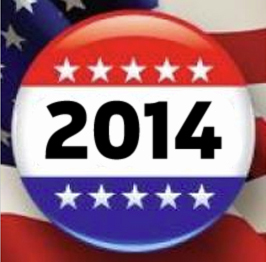AARP Hearing Center
A New Breed of Oddsmakers Invades the World of Politics
By Richard E. Cohen, September 30, 2014 04:33 PM

Even if you’re not a political junkie, you’re probably aware of the all-out partisan fight for control of the U.S. Senate and House and statehouses across the nation. But you may not know about another hard-fought election contest that’s likely to be decided on Nov. 4.
It has to do with the growing influence of a new breed of political prognosticators who use highly complex models to forecast the outcome of elections before most voters even cast their ballots.
>> AARP Voter Education Guide
The models go by such names as Leo, FiveThirtyEight and Election Lab.
The New York Times, which created Leo, describes it is “ a statistical model that combines polling, fund-raising data and other variables to forecast win probabilities in each race.” The other variables include the candidates’ political experience, money raised and state-level voting history.
In its primer on Leo, the Times notes that it “owes an intellectual debt to earlier models ... especially the FiveThirtyEight model, which popularized ideas about adjusting polls, combining polls with other information and national swings.” It fails to mention, however, that FiveThirtyEight had been a popular feature at the Times during the 2012 campaign and that its founder, Nate Silver, subsequently jumped to the ESPN cable sports network, where his franchise extends way beyond politics.
>> Sign up for the AARP Advocacy Newsletter
Silver recently described his model as “a rule-driven approach that doesn’t flinch just because the media narrative does.” No single poll, he added, “ought to change your perception of the campaign all that much.”
The mathematical models sometimes reach notably different conclusions. The Washington Post’s Election Lab recently forecast, for example, that Democrat Kay Hagan had a 97 percent chance of retaining her Senate seat from North Carolina. But FiveThirtyEight’s most recent forecast pegged the probability at 77 percent.
More-conventional political handicappers often cite these newfangled forecasts but then go their own way. Both Charlie Cook and Stuart Rothenberg, longtime friends and Washington-based competitors, currently forecast Hagan’s reelection prospects as a toss-up. Even though “for now the momentum seems to be with Hagan,” Cook says, Republican challenger Thom Tillis “could well win the seat.” The shifting political conventional wisdom, he adds, can be partly attributed to “methodological shifts among forecasters.”
>> Get travel discounts with your AARP Member Advantages.
Will voters comply with such forecasts? The answer to that one will have to wait for a few weeks.
Also of Interest
- Senate Candidates Put Their Parents in TV Ads
- Here’s How to Prevent 4 out of 5 Heart Attacks
- Get Involved: Learn How You Can Give Back
- Join AARP: Savings, resources and news for your well-being
See the AARP home page for deals, savings tips, trivia and more.































































